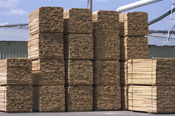
|
|
How Batch Production Manufacturing works

As businesses grow and their production volumes increase, the production process is often changed to a "batch method". Batch production methods require that a group of items move through the production process together, one stage at a time.
For example when a bakery bakes loaves of bread, a large ball of dough will be split into several loaves which will then be spread out together on a large baking tray. The loaves on the tray will then together be cooked, wrapped and dispatched to shelves, before the bakery starts on a separate batch of another bakery item. It is important to note that each loaf is identical within a batch but that loaves (or other items) can vary from batch to batch.
|
|
Batch production has become a very common method of organizing manufacture.Some examples of this include:
- Production of electronic instruments
- Small food vendors
- Paint and wallpaper manufacturers
- Cereal farming
The batch production method can be an advantage for businesses that produce a range of products. It is much cheaper to produce a number of each item in one pass because the machines can be used more effectively, the materials can be bought in bulk and the workers can specialize in that task. There are two major advantages of workers being able to concentrate their skills.
- They should become more expert at their tasks, which will in turn increase productivity (output per worker). This will result in lower costs, as fewer workers are needed to produce a set amount.
- There is a better quality product that is produced as workers are more familiar with the task and so can find ways of improving it.
However there are some disadvantages to the Batch Production Manufacturing method. Batch production requires very careful planning to decide what batch will be produced and when. In addition once a batch is in production it is very difficult to change, as switching to another batch takes time and will mean a loss of output. Batch methods frequently can also result in the build up of significant "work in progress" or stocks (i.e. completed batches waiting for their turn to be worked on in the next operation). This also increases costs as it takes up space and raises the chance of damage to stock.
An example of Batch Production Manufacturing shows how this process works-along with the potential pitfalls. Modern bicycle manufacture is now component based. The company first buys parts such as pedals from other manufacturers and puts the bicycle together on a production line. This is an example of how it works-
- The tube for the bicycle frame is cut to size. One person will do this job and they will cut enough tube for a batch of several hundred bikes in a week.
- The tube is then put together and prepared for welding. The tubes will be set up in a `jig' which holds the frame together. The frame then travels along the production line and the joints are preheated to save time. A gas torch is used to weld the frame together.
- The frames are then cleaned. A machine is used that shoots tiny particles of sand, at high speed, at the frame and cleans away the `residue' left behind by the welding process.
- All frames are then checked to ensure that they are straight. Small adjustments can be made at this stage.
- Paint is then sprayed on to the frames and forks.The frame then moves down the production line into a special oven which `bakes' the paint giving it a tough finish.
- The wheels are assembled by hand and they are then individually tested in a machine which automatically tensions each spoke to ensure that they are perfectly straight.
- The frames are machined so that other parts such as the handle bars and the bottom bracket (pedals) can be attached. While workers will operate the machine tools they will need some training before they can use the machines safely and efficiently.
- Other parts are then fixed to the frame.
- The bicycles are now ready for the shops where they will be viewed by customers and agents. Agents will buy "batches" of bicycles for larger stores.
- Before sending the bicycles to the shops, manufacturers will have agents view them and suggest changes for the next batch. This will help the manufacturer improve the design and production of bicycles in the next batch.
Privacy Policy, Terms of Use